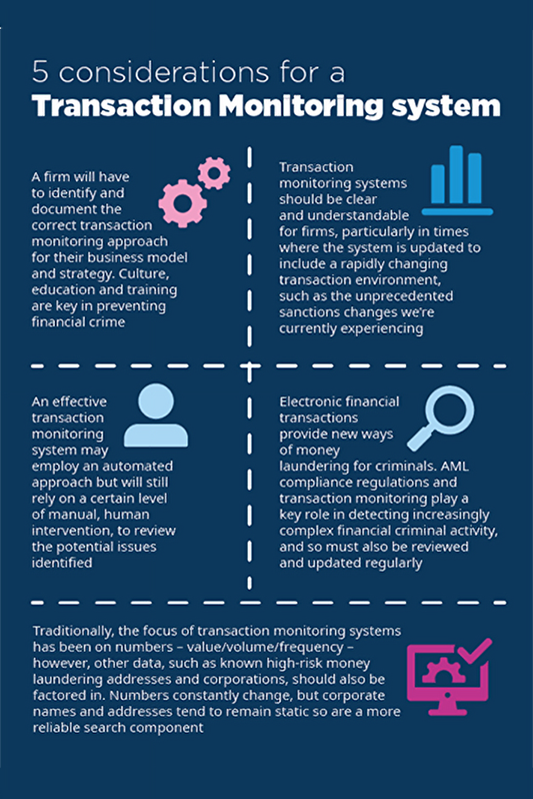Written by David Povey on Monday 11 April, 2022
Transaction monitoring is an area that is constantly in the spotlight. The challenge for a financial institution is to get the balance right of monitoring the accounts of those individuals who are up to no good, but without impacting on the transaction flow of those who are innocent. The infographic below will bring out 5 key considerations for anyone managing or working within transaction monitoring.



